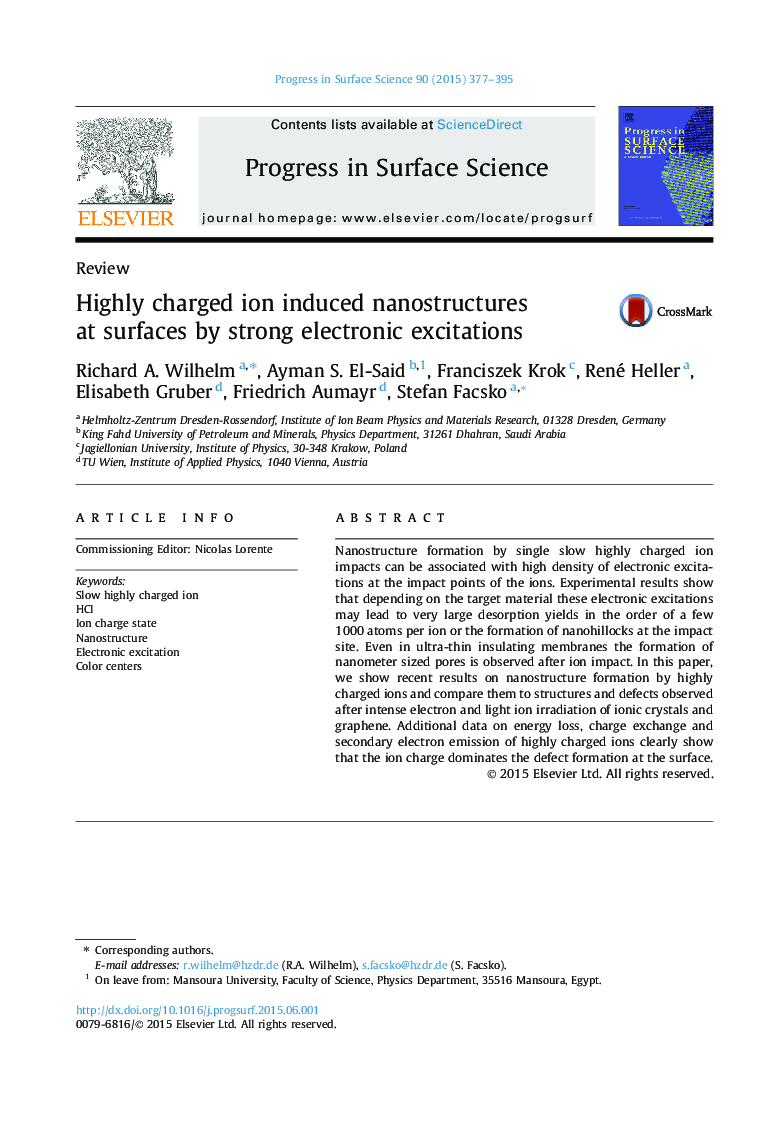| Article ID | Journal | Published Year | Pages | File Type |
|---|---|---|---|---|
| 5419947 | Progress in Surface Science | 2015 | 19 Pages |
Abstract
Nanostructure formation by single slow highly charged ion impacts can be associated with high density of electronic excitations at the impact points of the ions. Experimental results show that depending on the target material these electronic excitations may lead to very large desorption yields in the order of a few 1000 atoms per ion or the formation of nanohillocks at the impact site. Even in ultra-thin insulating membranes the formation of nanometer sized pores is observed after ion impact. In this paper, we show recent results on nanostructure formation by highly charged ions and compare them to structures and defects observed after intense electron and light ion irradiation of ionic crystals and graphene. Additional data on energy loss, charge exchange and secondary electron emission of highly charged ions clearly show that the ion charge dominates the defect formation at the surface.
Related Topics
Physical Sciences and Engineering
Chemistry
Physical and Theoretical Chemistry
Authors
Richard A. Wilhelm, Ayman S. El-Said, Franciszek Krok, René Heller, Elisabeth Gruber, Friedrich Aumayr, Stefan Facsko,
